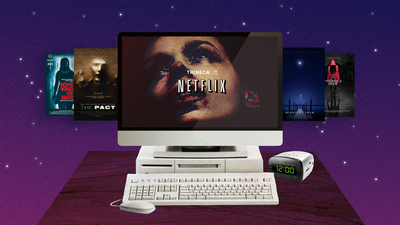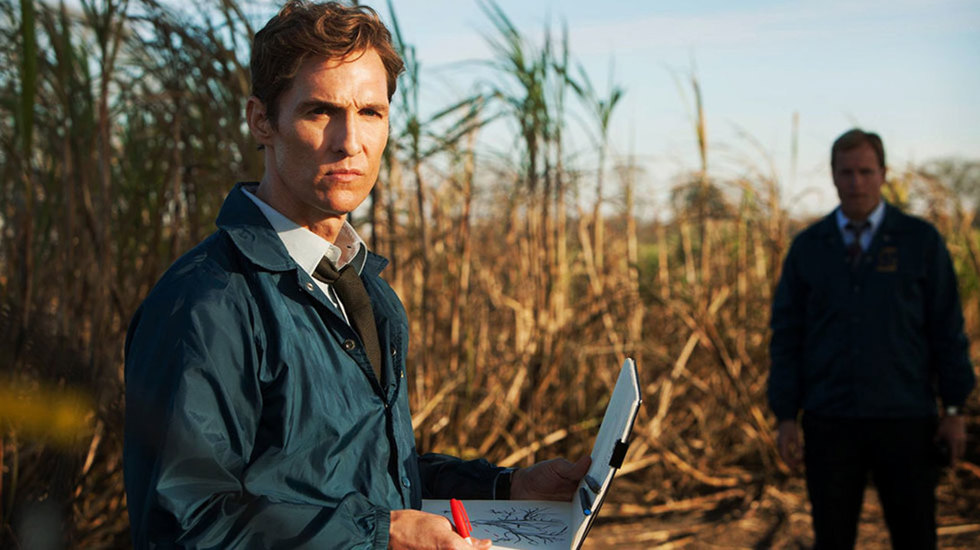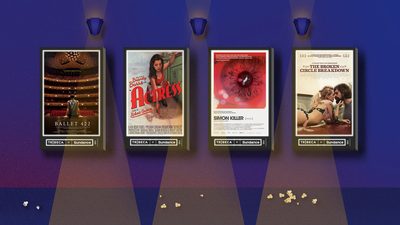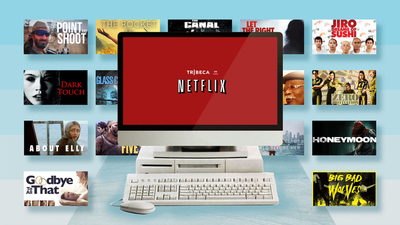
BY ZACHARY WIGON |
Racking Focus: On Binge-Watching and the TV/Cinema Divide
TV is taking market share from cinema - but is it a distinct format, or an increasingly similar one?

Here on Racking Focus I like to discuss the ever-erasing divide between TV and movies, as those increasingly irrelevant terms continue to lose significance as marks of distinction. This week feels like a particularly appropriate time to discuss one aspect of this (lack of a) divide, with the release of House of Cards on Netflix last Friday and True Detective throttling toward its climax while gaining fans by the second.
One of the fascinating things about House of Cards is that, due to Netflix's clever decision to release all episodes simultaneously, the experience of watching the show (if one binges) feels more akin to viewing a miniseries (or long-form cinema a la Out 1, if you prefer) than watching a TV show.
The fact that True Detective can be billed as a series is a testament to the fact that TV-watching audiences are increasingly being snuck movies in disguise.
Long-form miniseries are nothing new - Fassbinder's classic Berlin Alexanderplatz is often referred to as a 15-hour movie, though it was really a miniseries for German TV - but when we begin referring to miniseries as TV shows, something crucial is happening with regard to how we talk about - and therefore, conceive the expectations and limitations of - television.
One of the hallmarks of TV series is the fact that so much time can elapse between episodes; it's features like this that allow shows like Mad Men to cover so much ground with relative ease. Additionally, weekly, episodic TV has a certain rhythm to it, understanding that each week's installment must engage the viewer in the first act before raising dramatic tension to a climax by the end. With House of Cards, these laws of typical TV drama need not apply; the show's creators understand the manner in which the series is being watch, and thus are free to experiment with new modes of storytelling - like starting an episode off at the high level of drama the previous episode ended on - that are less common in traditional TV.
Filmmakers who are apprehensive of working in TV need to understand that the medium is continually reshaping itself to accommodate their needs.
However, what exactly is traditional TV? True Detective is being referred to as the most cinematic show on television, but with its stars and director not returning for season two, season one's eight-episode arc feels a lot more like a self-contained miniseries - more so than the work being done with American Horror Story, with its repertory-esque cast. The fact that True Detective can be billed as a series is a testament to the fact that TV-watching audiences are increasingly being snuck movies in disguise.
Pointing out this distinction is important for a number of reasons; among them is the fact that filmmakers who are apprehensive of working in TV need to understand that the medium is continually reshaping itself to accommodate their needs. Anyone who has doubts about TV's allowances for formalism should check out the virtuoso 6-minute shot that ends episode four of True Detective. But just as crucially, it's necessary to remind TV fans that TV is not gaining a greater share of cultural influence because it's "better" than cinema; it's gaining a greater influence because it is reappropriating the tenets of cinema.

